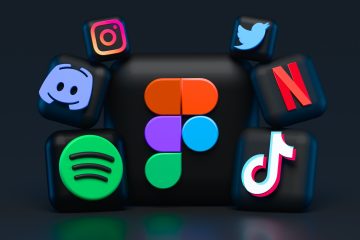Confused by this social media platform?
Snapchat has been around for a few years now, but there is still quite a lot of confusion among a lot of the people who are over 25 years. To help you understand what Snapchat is and how it works, we’ve made a guide to Snapchat.
Contents
What is Snapchat?
Snapchat is a social media company founded in 2011 in Venice Beach, USA by Evan Spiegel and Bobby Murphy. Through an app on your mobile, Snapchat allows you to send photos and videos to friends. The word “snap” can be translated to”snap a picture”. What you send on Snapchat is called a snap, from the English “snapshot”.
What was new with Snapchat when it came was that the app was designed to be used only in vertical mode (ie to shoot and film with the mobile portrait), that what it sent disappeared after it was shown and that the app was very complicated to use.
When the app was launched, basically no instructions were offered on how it worked. Which made it attractive to young people who themselves figured out what they could do. As a result, a type of user barrier was created for parents and other adults. Snapchat thus became a kind of “sheltered room” where young people could spend time in peace. Since very few instructions were offered, the young users also had to find out for themselves how they wanted to use the app’s functions – without being overly controlled by the creators.
In September 2016, the company changed its name to Snapchat to expand, then they also launched a pair of smart glasses, Spectacles. However, these have not been particularly significant. The company also owns the Bitmoji brand (more on that below) and Zenly, a “social map” where you can keep track of your friends and see how they move.
Snapchat Stories
Snapchat was also first with the so-called “stories” format. From the beginning, Snapchat only sent pictures and videos to friends who then disappeared. It did not make the platform so attractive to large profiles, companies, and influencers. That was one of the reasons why the Stories format was created.
It works so you can add snaps (pictures and videos) to “My story”. The snaps you add will then appear in order and can be displayed for 24 hours on your profile or in the Storys feed. It makes it possible to create content that even users you are not friends with can see. You can also make stories only for your friends or in a group with others (eg from a trip or party).
Making a story thus becomes a way to keep your friends or followers up for a whole day.
Does everything you send on Snapchat really disappear?
Even if a snap disappears when the recipient is watching it, the person receiving a picture can screenshot it (screenshot). Whoever sent the snap will receive a notification if the recipient has taken a screenshot.
There are also third-party apps that allow you to save snaps that someone has sent.
You can also choose to save Snaps you send or add to Stories in your “memories”.
How to chat using pictures and movies
We who are used to social media such as Facebook and Instagram think a lot in terms of that pictures and videos are something you “post” to get likes and comments. Chatting, on the other hand, is mainly something you do in text form.
Snapchat has introduced a new way for teens to talk to each other. Just as you can send a text message or message in text, you can also send a selfie or a short video. Sending messages that disappear when viewed is also reminiscent of face-to-face conversations because it is direct, instant, and then disappears.
For today’s young people it is quite obvious to have an advanced digital camera in their pocket all the time (smartphones!). Photography is no longer about documenting without communicating. Sending a selfie on yourself from the bus is kind of like writing “I’m sitting on the bus”.
“When you see your children taking a zillion photographs of things you would never take a picture of, because of using photographs to talk ”- Evan Spiegel, CEO and founder of Snapchat.
On Instagram and Facebook, you build a profile and a public image of yourself through the pictures, videos, and posts you publish and share. Where confirmation in the form of likes and comments is an important part. On Snapchat, there are no likes. The pictures and movies do not have to be good looking, nice or very interesting really.
A single snap can be sent to a friend or to several at once. It is not clear to the recipient if the snap was sent only to one or several.
Filter
Another ingredient in Snapchat’s success was the introduction of filters. On Snapchat, using augmented reality technology, you can make you look like a cute dog or a ghost. There are filters that make you “more beautiful / sweeter” through smoothing and “beautifying” effects. There are also totally snappy and fun filters that can change your voice, distort your face, and lots of other stuff.
Snapchat is the industry leader in this technology and they have only continued to refine it over the years.
In addition to the various filters you can use in the camera, there are also filters you can apply afterward, for example. location / event-specific filters, geofilters that show where you are, etc.
You can also add stickers, emojis, and text to your snaps.
Bitmojis
Bitmoji is a type of cartoonish, animated character that you create to look like yourself. On Snapchat, you can then generate different stickers (pictures) with your bitmoji to communicate.
There are also animated AR filters where your Bitmoji becomes a moving figure and does things. You can then “put” the figure in your environment, for example on the desktop, where it will then appear in 3D. Very funny!
When you chat with a friend on Snapchat who also has a Bitmoji linked to his account, you can also send friends stickers where you and your friend Bitmoji are together.
You can create and fix your bitmoji in the separate app and then link it to your Snapchat account.
Instagram VS Snapchat
Snapchat showed a whole new way of communicating, adapted to the “smartphone generation”. As the app grew in popularity, Instagram and Facebook copied many of Snapchat’s features.
Above all, Instagram Stories is a feature where Snapchat’s features and controls were basically copied straight from. Over time, Instagram has found some of its own niche on Stories, more tailored to how Instagram works. The use of Instagram Stories has also passed the use of Snapchat.
On Instagram Stories you get that little bit more demanding as what you post disappears after 24 hours, while still more about “posting” than chatting with pictures and videos like Snapchat. The format may, therefore, be a little better for us who are a little more used to the “old” way of thinking and using photography and pictures. The use of Instagram Stories crossed Snapchats in early 2017.
Facebook has also introduced a similar format built into Messenger. Facebook’s longer-term idea of introducing this format is to “attract” users who have not started with Snapchat yet, eg. in other parts of the world.
Snapchat’s challenges
For the company Snapchat (or Snap Inc then) there is a major challenge in how to make money on the platform. Because even if you have a lot of users and have invested millions and millions in investments, you must ultimately be able to make a profit in order to survive as a company.
Since Snapchat’s main user group is teens who want to “be for themselves” and chat privately, it is difficult to make money through ads. When the company redesigned the interface to create more surfaces for companies that want to be seen, this has been met by major criticism from users.
Young users are also quick at new things, so if there is a new app that appeals to the target group more then it is possible that they skip there instead.






